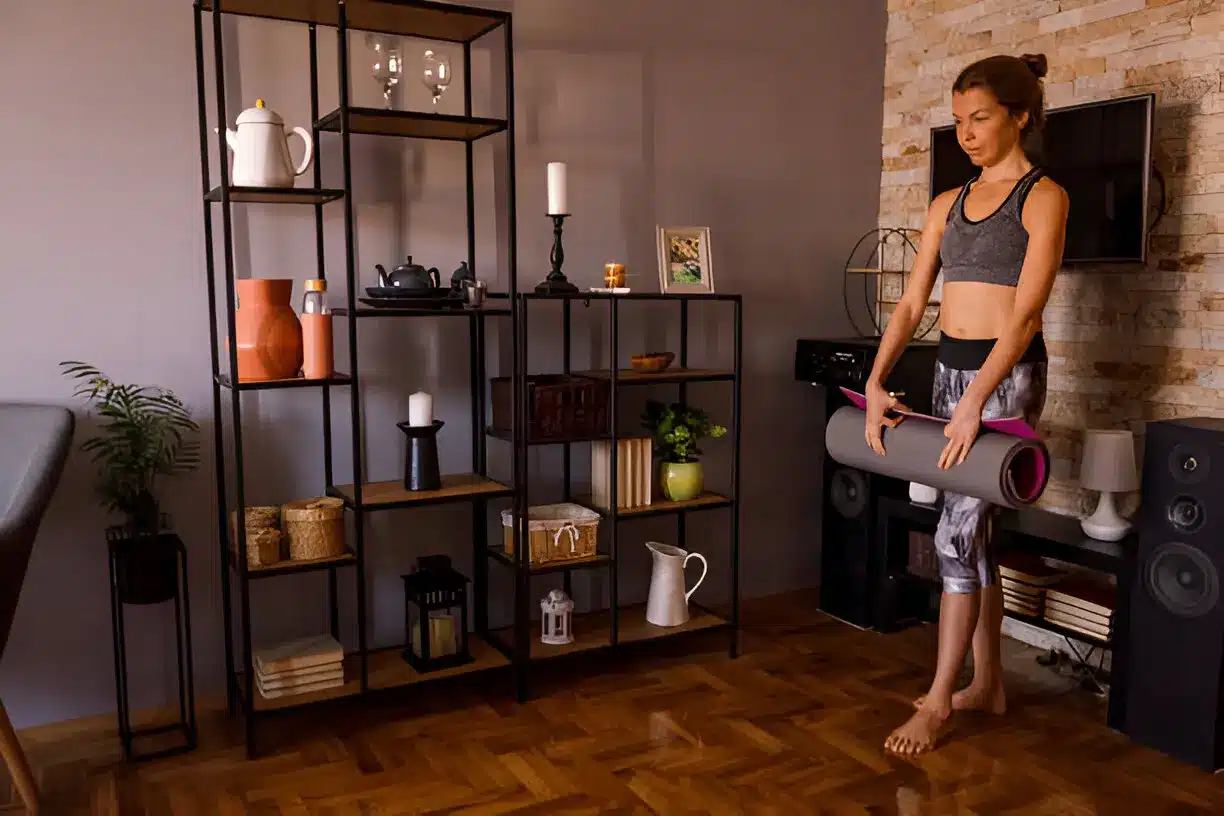Yoga is not simply a practice, but a lifestyle.
From the moment we step onto the mat to the spaces we create around us, every detail matters. One small yet deeply meaningful addition to your environment that resonates with yogis of all levels is the yoga figure.
These thoughtfully crafted statues—depicting meditative stances, Namaste gestures, or flowing asanas—offer both visual beauty and spiritual grounding. But the real transformation happens when they’re placed with intention.
So where should you place your yoga figure for the greatest impact?
Let’s explore the best spots, styles, and placement tips to create a space that’s not only beautiful but also mindful, grounded, and peaceful.
1. What Is a Yoga Figure and Why It Matters
Before discussing placement, it’s essential to understand the significance of a yoga figure. These are sculpted representations of yogic postures or values, often made of materials like brass, wood, ceramic, or stone. They aren’t just decor—they serve as daily visual reminders of balance, breath, presence, and intention.
Real-Life Parallel:
Just like a photograph can evoke memories, a yoga statue can awaken qualities like gratitude, strength, calm, or flexibility.
2. Entryway: Setting the Tone from the Start
Why It Works:
The entryway is the energetic gateway to your home or studio. Placing a yoga figure here immediately sets a mindful and welcoming tone.
How to Place It:
- Start with a welcoming pose like Anjali Mudra (Namaste) to set a calm and respectful tone.
- Place it on a small wooden riser or floating shelf.
- Keep the area clean and well-lit.
Tip: A brass yoga statue brings a warm, grounding energy to entrances.
️ 3. Living Room: The Mindful Conversation Starter
Why It Works:
The living room typically serves as the central and most cherished space in a home. A yoga figure here not only encourages harmony but also acts as a great conversation piece.
How to Place It:
- Opt for Lotus (Padmasana) or Tree Pose (Vrikshasana) for balance.
- Position it on a bookshelf, side table, or as part of a zen-inspired centerpiece.
- Surround it with natural elements like stones or candles.
Example:
One client placed her yoga figure next to family photos, symbolizing the union of personal and spiritual balance—visitors were naturally drawn to its calm energy.
️ 4. Personal Yoga or Meditation Nook: Your Holy Anchor
Why It Works:
Your practice space should be sacred and free of distraction. A yoga figure here acts as a visual and energetic anchor for your practice.
How to Position It:
- Use a seated meditative pose.
- Position at eye level or slightly above your mat.
- Add ambiance to the space with elements like incense, candles, or a thoughtfully arranged small altar.
️ Pro Tip: Keep this area clutter- and electronics-free to preserve its calm energy.
5. Bedroom: Encouraging Restful Energy
Why It Works:
The bedroom benefits from soothing, gentle energy. A yoga figure here can help promote emotional balance and restful sleep.
How to Place It:
- Choose calming postures like Savasana or Seated Meditation.
- Set it on a nightstand, dresser, or windowsill.
- Avoid facing it toward clutter or digital screens.
Real-Life Use:
A customer placed a yoga figure on her nightstand to anchor herself in breath and grounding at the start and end of her day.
6. Home Office: Inspire Focus and Balance
Why It Works:
Work spaces are often where stress builds. A yoga statue here encourages conscious breaks and emotional equilibrium.
How to Position It:
- Place near your computer or on a side shelf.
- Choose minimalist styles and subtle colors to avoid visual overload.
- Complement it with a plant or a Himalayan salt lamp for a calming, balanced touch.
Example:
A Yogikuti customer added a standing warrior yoga figure to her desk for strength and motivation during long workdays.
7. Yoga Studio: Emblem of Energy Flow
Why It Works:
A yoga figure in a studio symbolizes the space’s purpose and helps practitioners connect to the energy of the room.
How to Place It:
- Place large statues at the front of the room.
- Consider small yoga figures beside each mat as subtle inspiration.
- Align your poses with the studio’s core themes such as balance, strength, or surrender.
Studio Example:
A yoga teacher placed matching statues in each corner of her studio, creating symmetry and a safe, focused atmosphere.
8. Feng Shui and Energy Tips
- Avoid clutter around the figure.
- Use natural bases like wood, stone, or marble for grounding.
- Don’t place the statue directly on the floor.
- Keep it clean and dust-free.
Quick Reminder:
Intention matters more than location. A small yoga figure placed with love can hold immense spiritual power.
9. Selecting the Best Yoga Figure by Yogikuti
What to Consider:
- Material:
- Brass = grounding
- Ceramic = elegance
- Wood = warmth
- Tree Pose = balance
- Lotus Pose = stillness
- Namaste = gratitude
- Small = desks/shelves
- Medium = meditation corners
- Large = studios or altars
Why Choose Yogikuti:
Each yoga figure from Yogikuti’s Statue Collection is handcrafted with deep attention to detail, making them perfect for personal use or thoughtful gifts. Their designs support the intention of creating a peaceful, empowered practice space.
Final Thoughts: A Small Statue with a Big Impact
A yoga statue is more than just decor—it’s a tool of alignment, mindfulness, and meaning. No matter your level of practice, placing a yoga figure with intention can transform any space into a sacred one.
So, whether it’s a shelf in your hallway, the heart of your studio, or your private meditation corner—place your yoga figure where your energy flows most naturally. Let it remind you to pause, breathe, and stay connected to the present moment.
Also Read-Online Lead Generation Techniques for Professional Services










